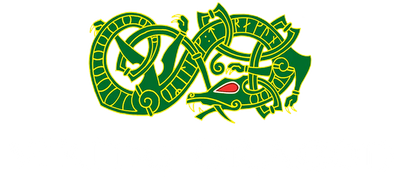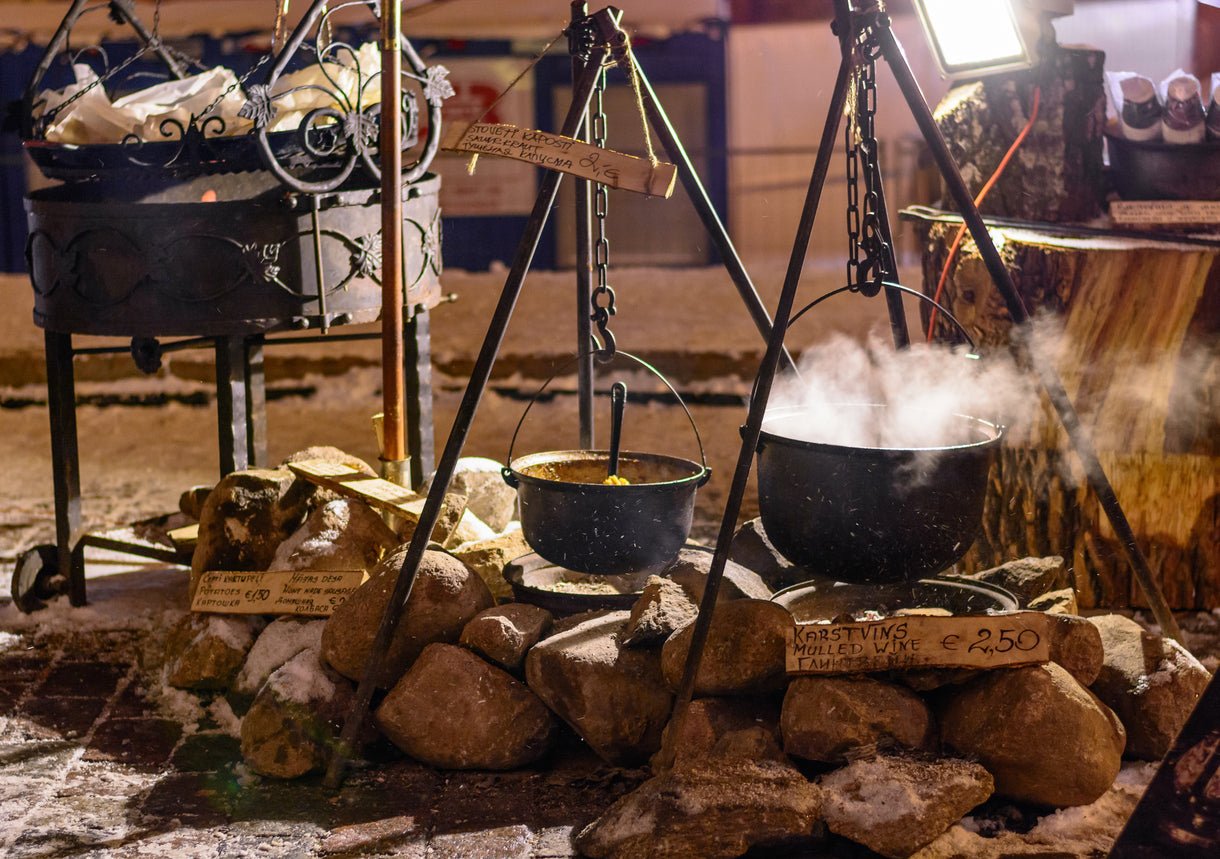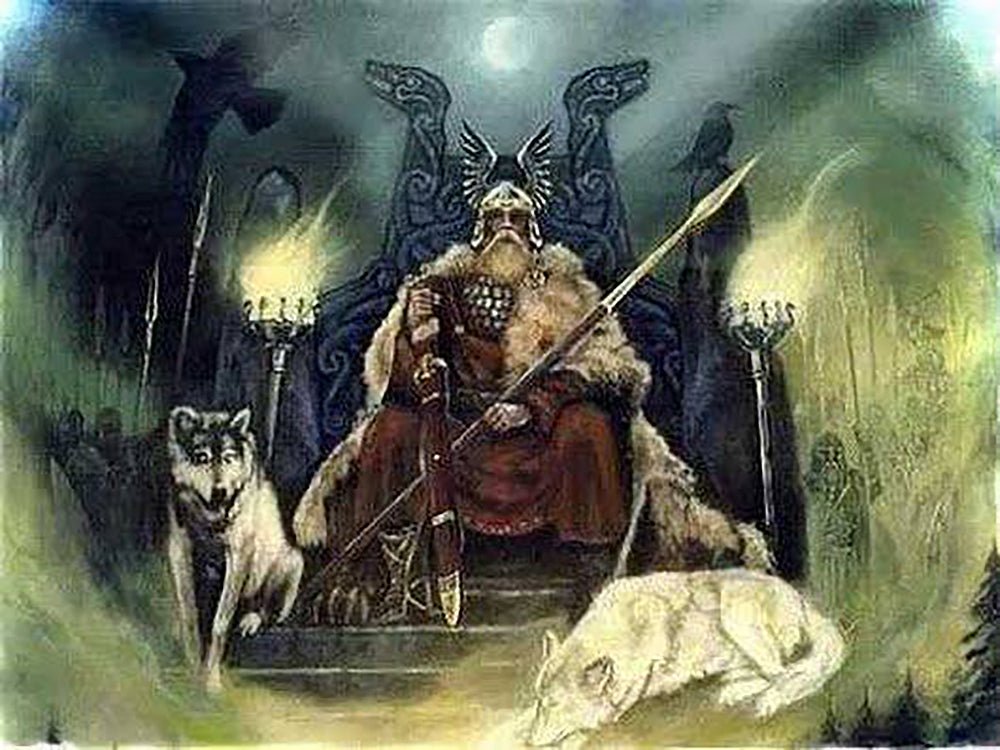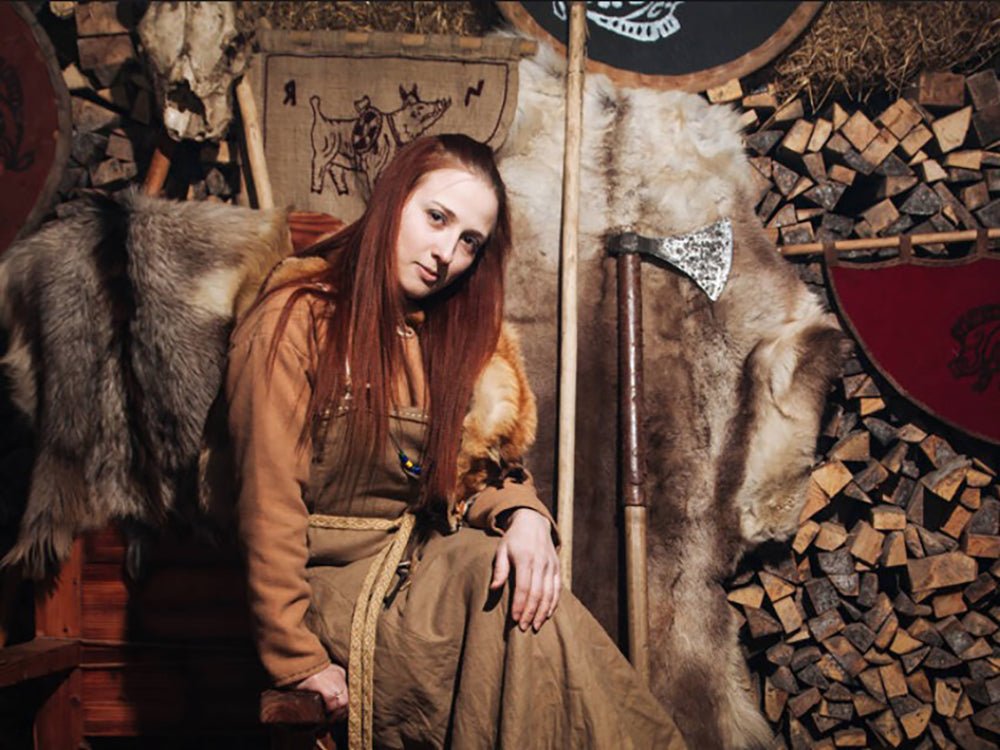From Meat, to Mead, to Nutmeg: Viking Food Explained
Whether travelling overseas, fighting in a battle on foreign shores or simply toiling on the family farm, Vikings lead active lives which needed to be supported by a varied and rich diet. Rich in meat, fish, nutritious greens and healthy fats, Vikings had some of the best diets across Medieval Europe due to their skill in farming, hunting, foraging, and storing perishable foods.
People alive during the 8th to the 11th centuries did not have the luxury that we do of eating the same fresh fruit and vegetables all year round. The average Viking was self-sufficient, eating what they could produce seasonally on their own farmstead and hunt, trap or forage from the surrounding landscape. With crops in the fields, livestock in the sheds and a fertile landscape of wild plants and animals just outside their door, the Viking pantry may have been as varied and interesting as the array in your fridge today.
Daily Meal Times
Vikings typically ate two meals during the day: dagmall (day meal) and nattmall (night meal). Dagmall was eaten about an hour after rising and consisted of leftover stew from the night before. The stew would remain in the pot overnight, and by the morning the at would have risen to the top, providing the perfect slow-release energy for the working day ahead. While the adults enjoyed this hearty stew, the children usually ate porridge with bread, fruit and/or honey for their breakfast. The adults may also have had some bread or fruit alongside their morning meal.
Preparing the nattmall was one of the key duties of the women of the household. This hearty stew was prepared in a metal cauldron or soapstone pot and slowly simmered over the central hearth of the longhouse. Meat or fish was the main ingredient, with added vegetables and legumes for additional nutrients. One pot of stew was expected to last several days, with new ingredients being added each day to bulk up the meal.
Bread was also usually served alongside the nattmall stew. Viking bread didn’t look much like the leavened loaves that we have today. It would have typically been made of barley or rye and cooked on a flat stone or iron griddle. These flatbreads had to be prepared daily since they went stale after just a few hours.
The Family Farm

The bulk of the Viking diet consisted of food that could be grown on the family farm. The whole family helped to produce food from the land or the livestock. While men worked the fields, women could look after animals and process milk into cheese, butter or skyr (an extremely soft cheese with a taste and texture similar to Greek yoghurt). Children could also help by collecting eggs, removing stones from fields, and performing other light duties.
Vikings performed a kind of mixed agriculture, with several types of crops planted in the same field. The primary crops would have been grains such as oats, barley and rye, as well as some root vegetables. In Denmark and the southernmost regions of Norway and Sweden, it was also possible to grow wheat. A family may also have grown vegetables on their own land, though for the most part, these would have been foraged.
The types of vegetables that Vikings could have grown would have varied by where they lived. A farm in the fertile hills of central Jutland might have been abundant with carrots, turnips and greens, perhaps even with a herb garden to flavour meals and provide medicines. On the contrary, farmers living in the rocky mountains of Western Norway would have had a harder time growing vegetables at all and thus subsisted primarily on grains.
Foraging

As well as the grains and vegetables grown on the farm, Vikings were expert foragers who knew where they could find tasty supplements to their diet on the fertile Scandinavian landscape. Foragable produce could include anything from greens such as lettuce, onions and cabbage, fruits and berries, and herbs such as parsley, mustard, dill and thyme. Since there was no school for children to go to during the Viking era, this job would likely have been done by the youngest members of the family.
Feasting
If you’ve watched any films or TV shows set in the Viking age you’re bound to be familiar with the Vikings’ fondness for feasting. Medieval Norsemen held feasts to celebrate many important seasonal and religious festivals, such as Jul, Mabon and Midsummer, as well as to mark personal celebrations such as a wedding or successful voyage. Even poorer hosts would offer their guests a bountiful spread of rich and varied foods, including spit-roasted meat, hearty stews, buttered vegetables, fresh fruits and green vegetables. Some Viking feasts would last for several days, so it often wasn’t just the host who would store and collect food for the guests, but the whole community who would come together to produce this amazing spread.

Of course, we couldn’t talk about Viking feasts without mentioning drinking. Mead and Ale were not only drunk during feasts (but they were also often safer to drink than water), though celebrations were really where they came into their own. Beer was made by fermenting barley, and possibly adding hops for flavour. It would have been relatively weak by modern standards. Mead was normally the stronger choice. This sweet honey wine’s large quantity of fermented sugar meant that it could pack quite the punch.
Since grapes don’t grow naturally in Scandinavia, Vikings didn’t make their own grape wines, however, that doesn’t mean they never tried it. Wine was encountered abroad in continental Europe and the Middle East and was imported for the Viking nobility to enjoy. Given its rarity and exclusivity to the rich, it would have been quite the status symbol.
Food for Voyaging

While most Vikings would have spent their entire lives on land, the minority who set sail on the high seas are so significant to the society’s history that it’s impossible not to mention the diet of seafaring Vikings. Since Viking longships were not equipped with refrigerators, most of the food brought aboard would have been dried, salted or smoked so that it would be safe to eat throughout the voyage. Particularly important were sea biscuits: a nutritious, long-lasting flatbread made from barley flour, wheat meal, smoked meat and dried vegetables. As far as fresh food went, sailors could fish from the side of the boat, and chickens may also have been brought on the voyage to provide eggs.
Viking voyagers also encountered the foods of the distant lands that they travelled to. In the Byzantine Empire, Vikings learned to fry food in walnut oil, and amassed vast quantities of walnuts to be brought back North. Here they also traded furs, skins, walrus ivory and slaves for cumin, nutmeg and ambergris. This was precious currency which they could in turn be traded on the Asian Silkroad or be taken home as a delicacy for the Viking nobility to enjoy.








